Partitions Numériques55
Matériel de Musique16 351
STUDIO |
SONO |
LUMIERE |
DEEJAY |
MICROPHONE |
MARQUES |
GUITARE |
CLAVIER |
PERCUSSION |
CUIVRE / VENT
|
NOËL
|
CORDES/TRAD.
|
R.AVANCÉE
55 partitions trouvées
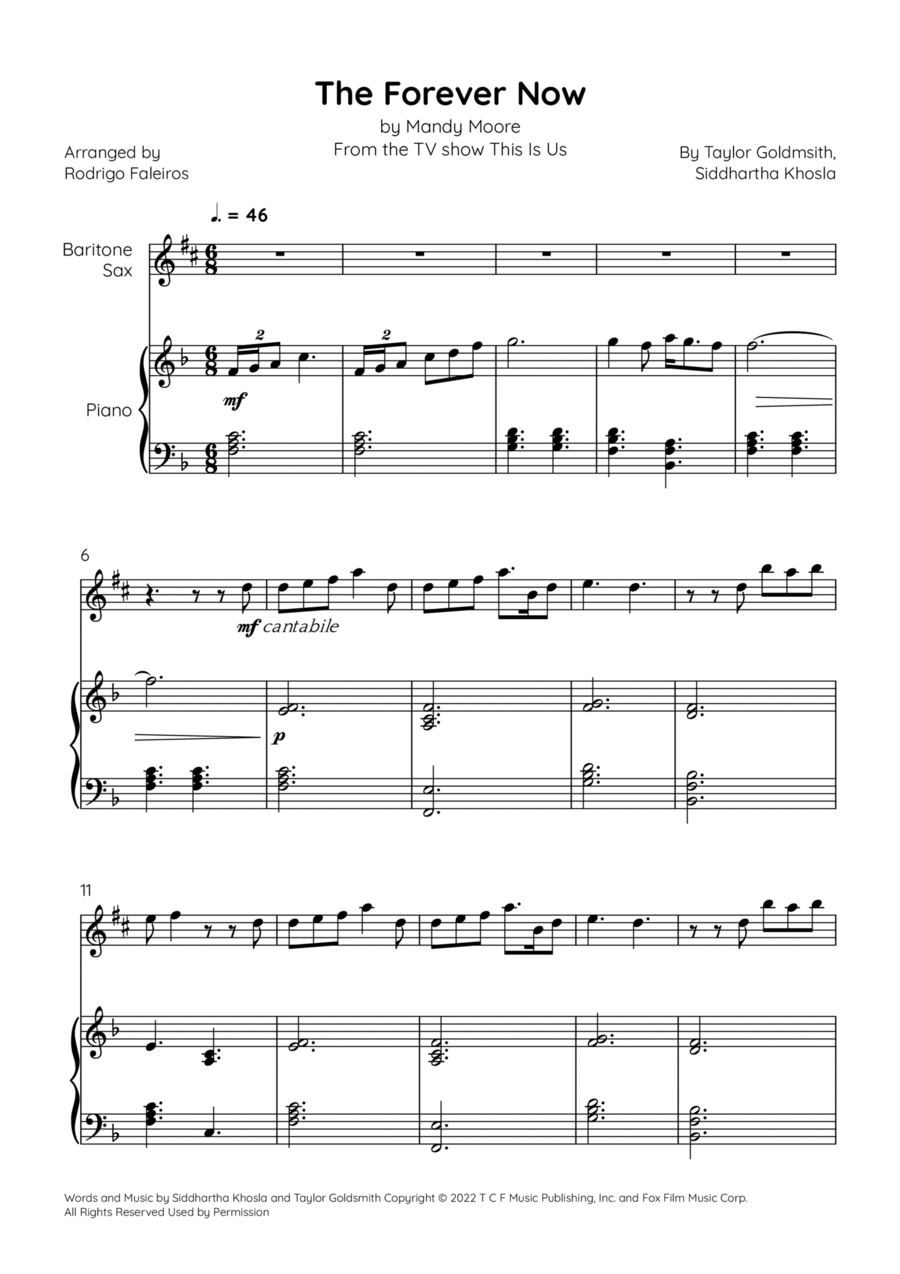

 The Forever Now #Saxophone Baryton, Piano #FACILE #Mandy Moore #Rodrigo Faleiros #The Forever Now #Rodrigo Faleiros #SheetMusicPlus
The Forever Now #Saxophone Baryton, Piano #FACILE #Mandy Moore #Rodrigo Faleiros #The Forever Now #Rodrigo Faleiros #SheetMusicPlus
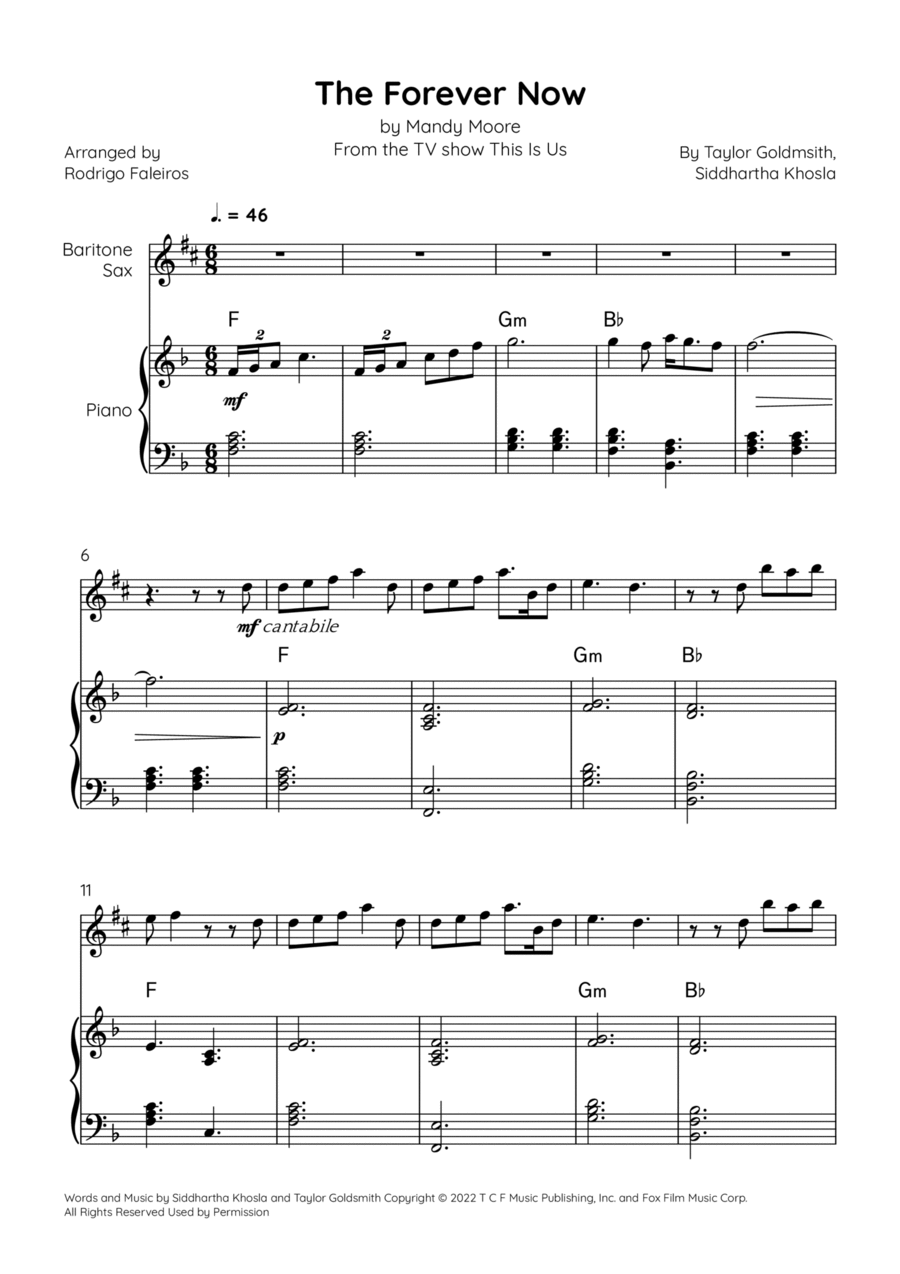

 The Forever Now #Saxophone Baryton, Piano #FACILE #Mandy Moore #Rodrigo Faleiros #The Forever Now #Rodrigo Faleiros #SheetMusicPlus
The Forever Now #Saxophone Baryton, Piano #FACILE #Mandy Moore #Rodrigo Faleiros #The Forever Now #Rodrigo Faleiros #SheetMusicPlus


 Mendelssohn: Wedding March for Baritone Sax & Piano #Saxophone Baryton, Piano #INTERMÉDIAIRE #Classique #Felix Bartholdy Mendelssohn #James M #Mendelssohn: Wedding March for #jmsgu3 #SheetMusicPlus
Mendelssohn: Wedding March for Baritone Sax & Piano #Saxophone Baryton, Piano #INTERMÉDIAIRE #Classique #Felix Bartholdy Mendelssohn #James M #Mendelssohn: Wedding March for #jmsgu3 #SheetMusicPlus
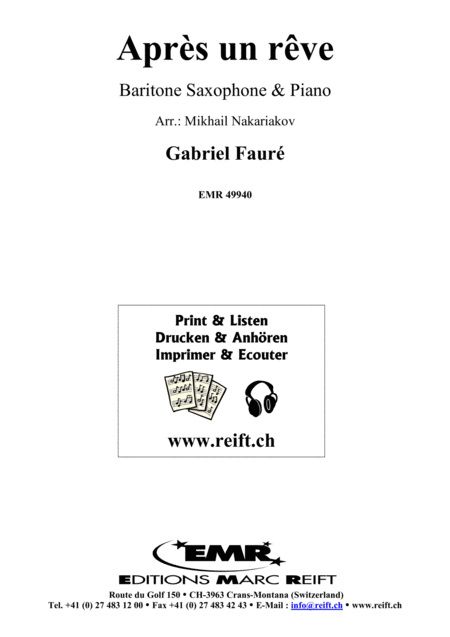

 Apres un reve #Saxophone Baryton, Piano #INTERMÉDIAIRE #Classique #Gabriel Faure #Mikhail Nakariakov #Apres un reve #Editions Marc Reift - Digital #SheetMusicPlus
Apres un reve #Saxophone Baryton, Piano #INTERMÉDIAIRE #Classique #Gabriel Faure #Mikhail Nakariakov #Apres un reve #Editions Marc Reift - Digital #SheetMusicPlus
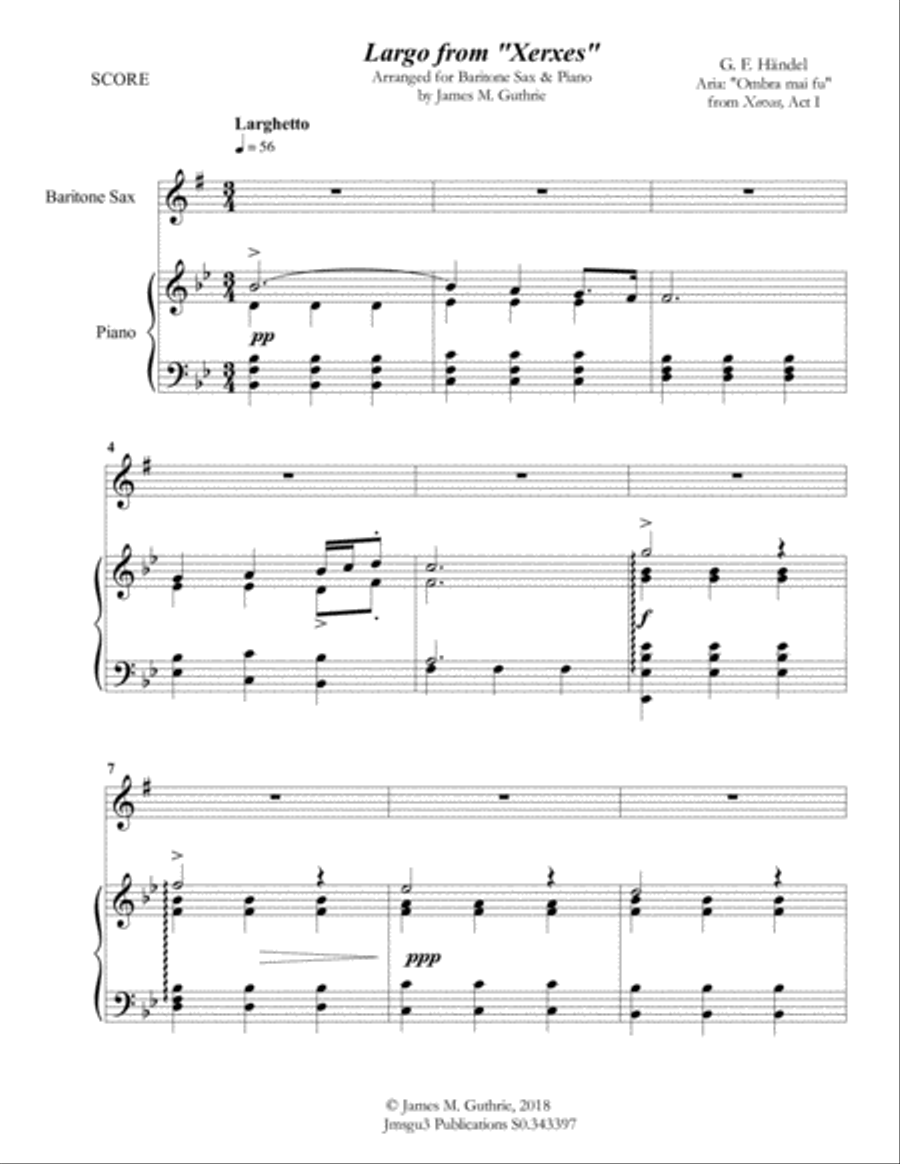
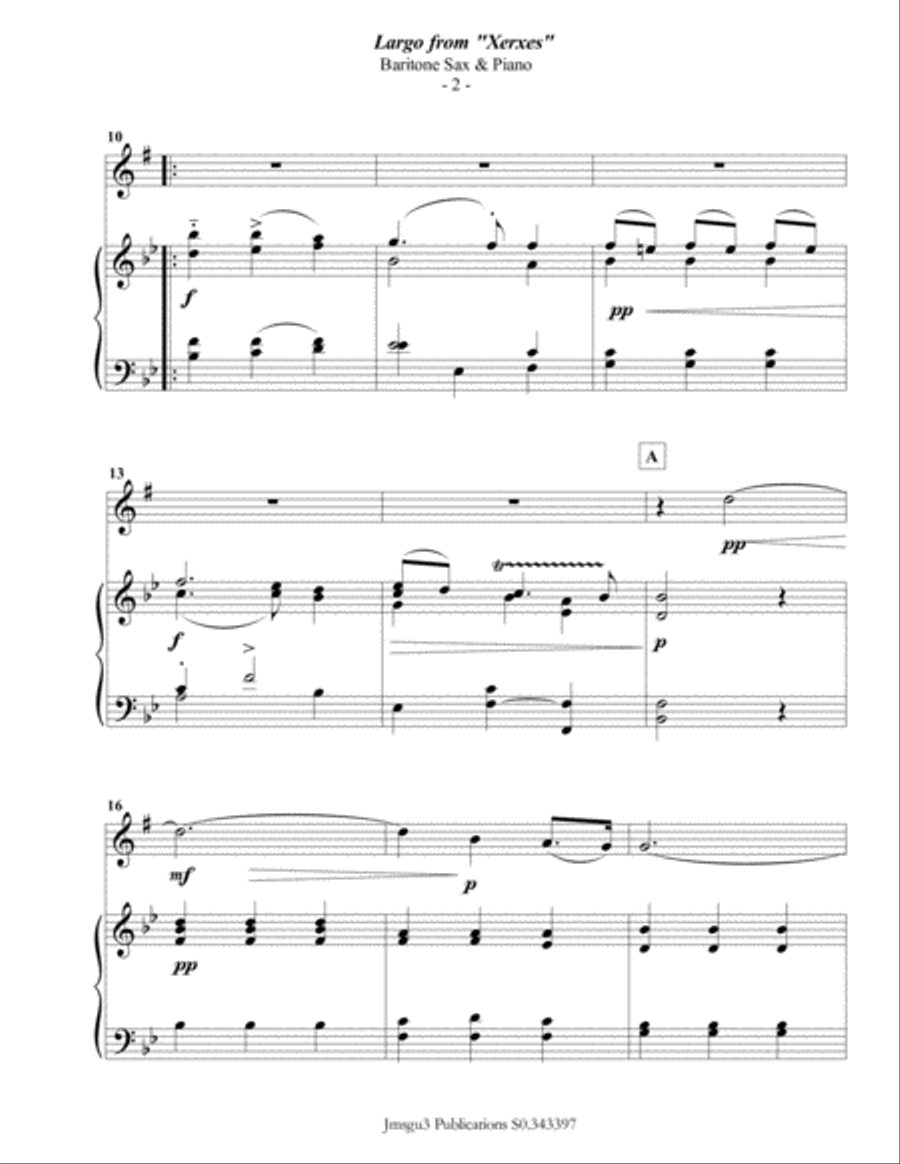
 Handel: Largo from Xerxes for Baritone Sax & Piano #Saxophone Baryton, Piano #INTERMÉDIAIRE #Classique #George Frideric Handel #James M #Handel: Largo from Xerxes for #jmsgu3 #SheetMusicPlus
Handel: Largo from Xerxes for Baritone Sax & Piano #Saxophone Baryton, Piano #INTERMÉDIAIRE #Classique #George Frideric Handel #James M #Handel: Largo from Xerxes for #jmsgu3 #SheetMusicPlus
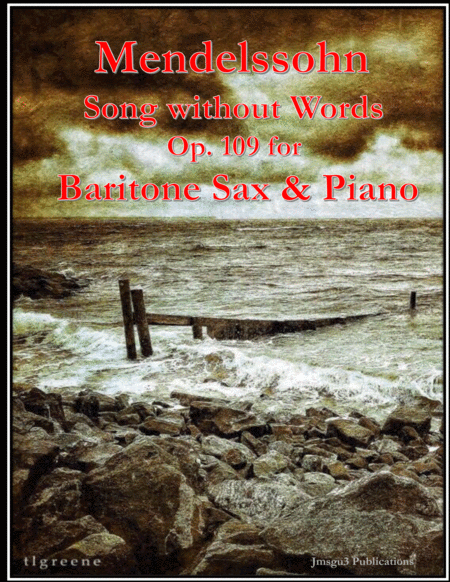

 Mendelssohn: Song Without Words Op. 109 for Baritone Sax & Piano #Saxophone Baryton, Piano #INTERMÉDIAIRE #Felix Mendelssohn #James M #Mendelssohn: Song Without Word #jmsgu3 #SheetMusicPlus
Mendelssohn: Song Without Words Op. 109 for Baritone Sax & Piano #Saxophone Baryton, Piano #INTERMÉDIAIRE #Felix Mendelssohn #James M #Mendelssohn: Song Without Word #jmsgu3 #SheetMusicPlus


 Au Revoir #Saxophone Baryton, Piano #FACILE #Behr, Franz #Nick Lacanski #Au Revoir #theupperstaff #SheetMusicPlus
Au Revoir #Saxophone Baryton, Piano #FACILE #Behr, Franz #Nick Lacanski #Au Revoir #theupperstaff #SheetMusicPlus
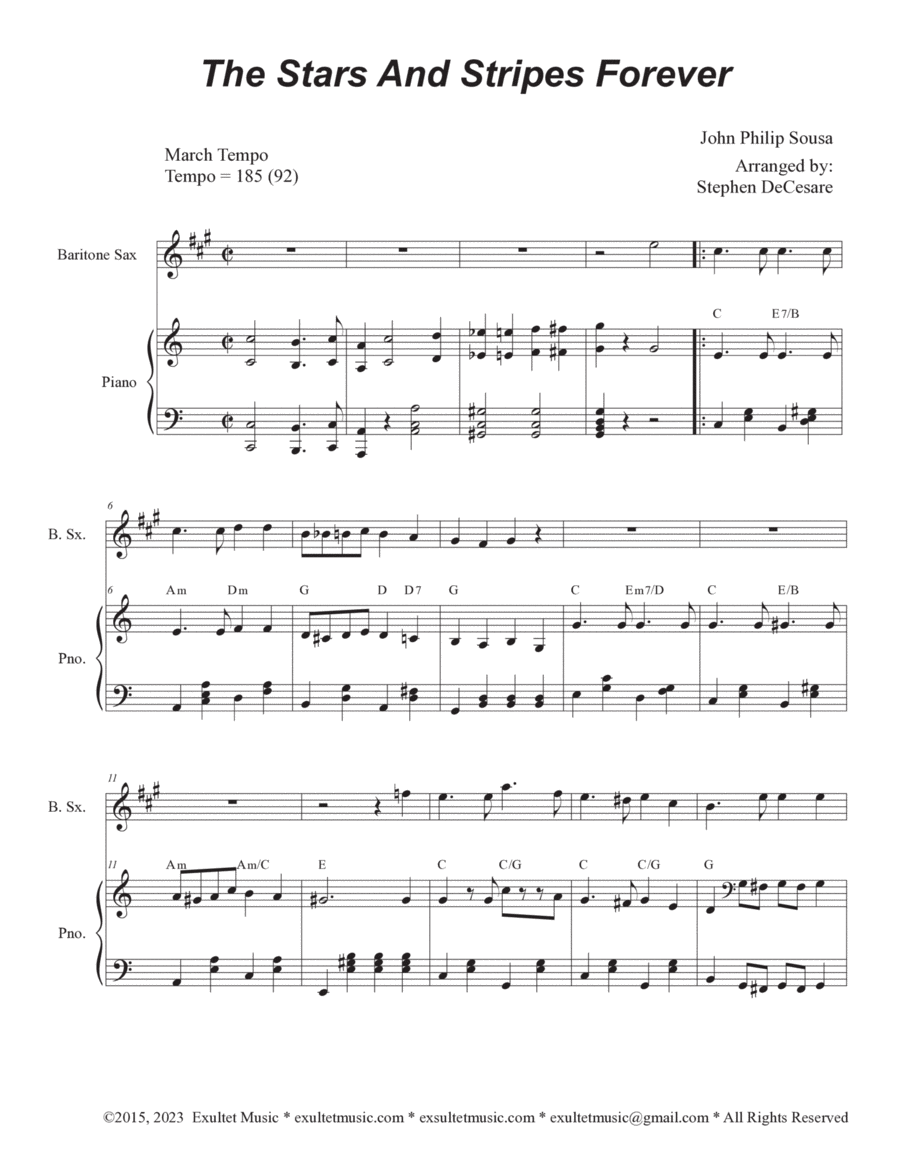

 The Stars and Stripes Forever (Baritone Saxophone and Piano) #Saxophone Baryton, Piano #FACILE #Contemporain #Stephen DeCesare #Stephen DeCesare #The Stars and Stripes Forever #Exultet Music #SheetMusicPlus
The Stars and Stripes Forever (Baritone Saxophone and Piano) #Saxophone Baryton, Piano #FACILE #Contemporain #Stephen DeCesare #Stephen DeCesare #The Stars and Stripes Forever #Exultet Music #SheetMusicPlus
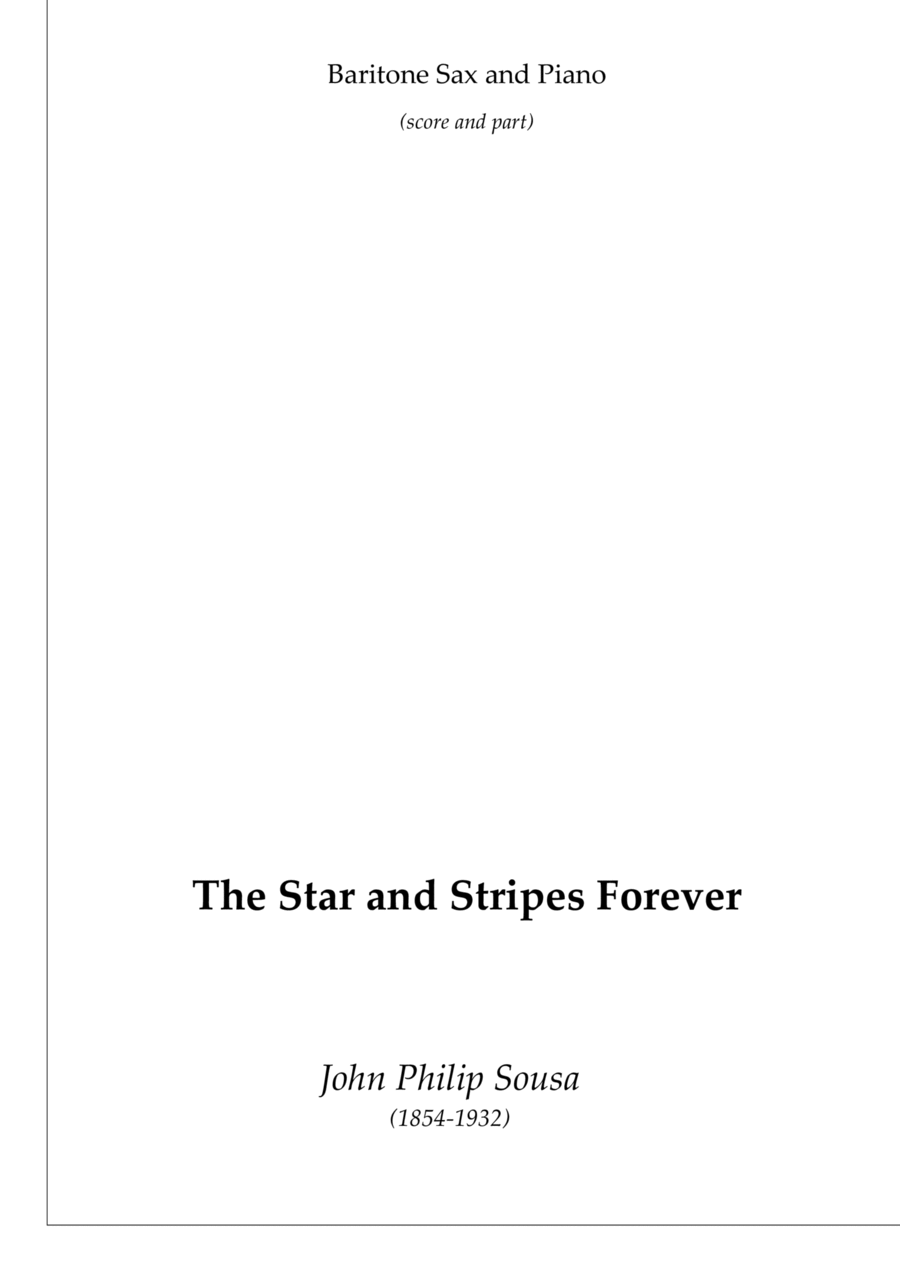

 The Stars and Stripes Forever (baritone sax and piano) #Saxophone Baryton, Piano #DÉBUTANT #John Philip Sousa #Passoni Music #The Stars and Stripes Forever #Passoni Music #SheetMusicPlus
The Stars and Stripes Forever (baritone sax and piano) #Saxophone Baryton, Piano #DÉBUTANT #John Philip Sousa #Passoni Music #The Stars and Stripes Forever #Passoni Music #SheetMusicPlus
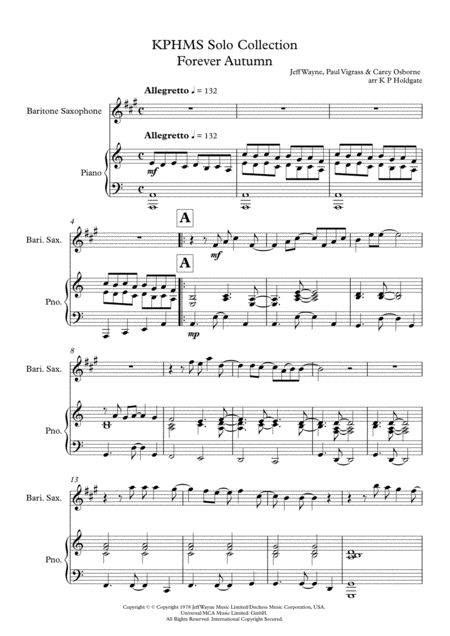

 Forever Autumn #Saxophone Baryton, Piano #INTERMÉDIAIRE #Rock #The Moody Blues #Kevin P Holdgate #Forever Autumn #Kevin P Holdgate #SheetMusicPlus
Forever Autumn #Saxophone Baryton, Piano #INTERMÉDIAIRE #Rock #The Moody Blues #Kevin P Holdgate #Forever Autumn #Kevin P Holdgate #SheetMusicPlus
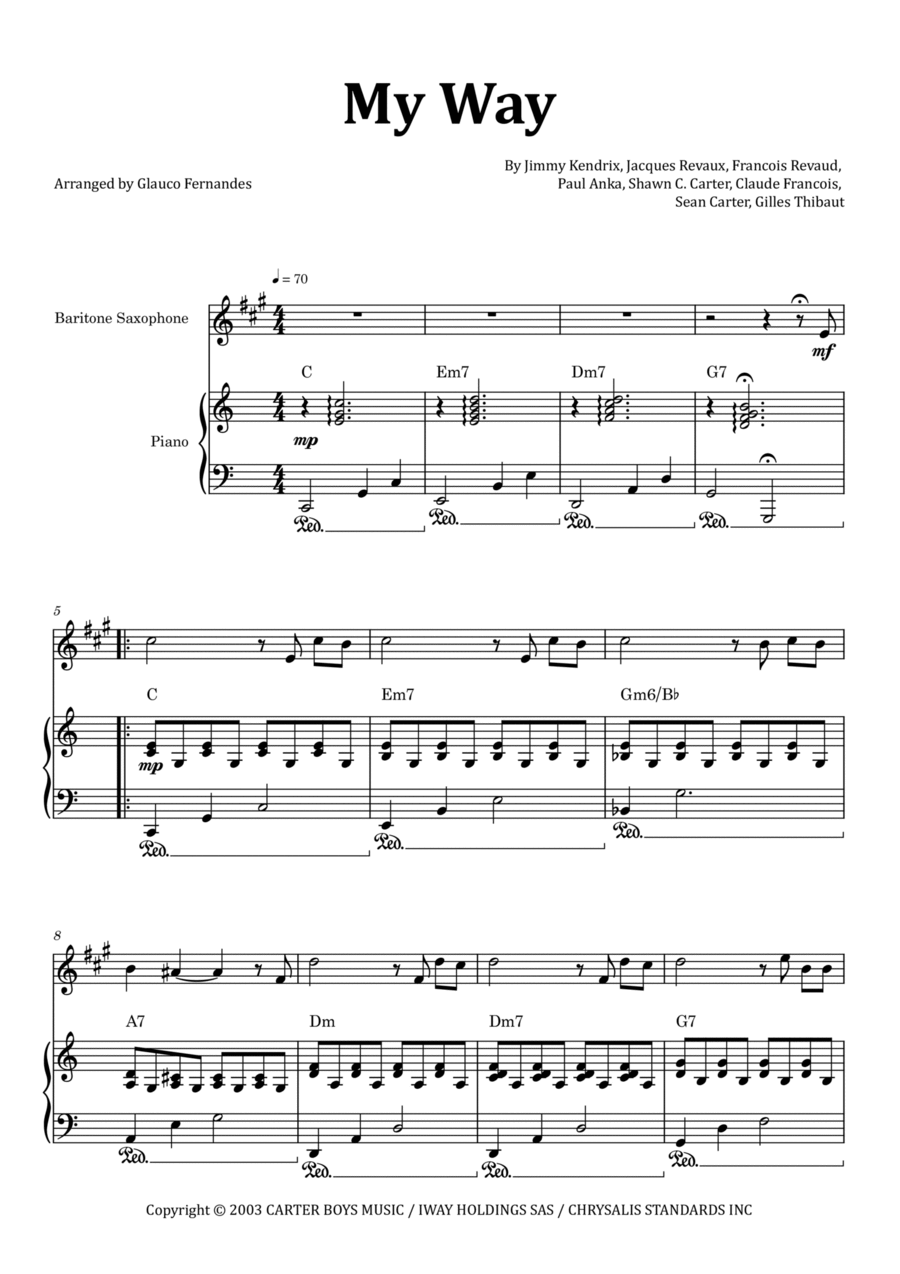

 I Did It My Way #Saxophone Baryton, Piano #FACILE #Jay-Z #Glauco Fernandes #I Did It My Way #Glauco Fernandes #SheetMusicPlus
I Did It My Way #Saxophone Baryton, Piano #FACILE #Jay-Z #Glauco Fernandes #I Did It My Way #Glauco Fernandes #SheetMusicPlus
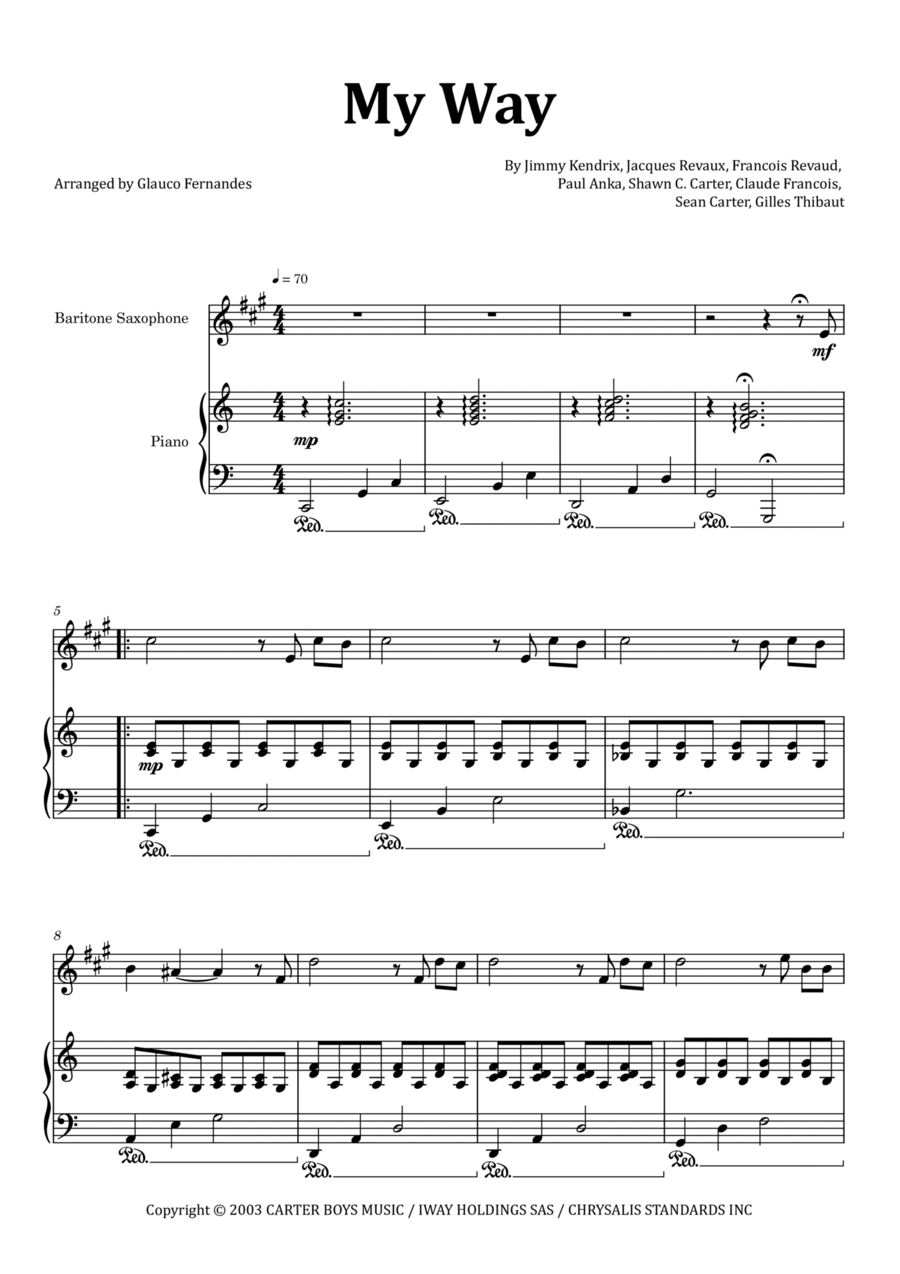

 I Did It My Way #Saxophone Baryton, Piano #FACILE #Jay-Z #Glauco Fernandes #I Did It My Way #Glauco Fernandes #SheetMusicPlus
I Did It My Way #Saxophone Baryton, Piano #FACILE #Jay-Z #Glauco Fernandes #I Did It My Way #Glauco Fernandes #SheetMusicPlus
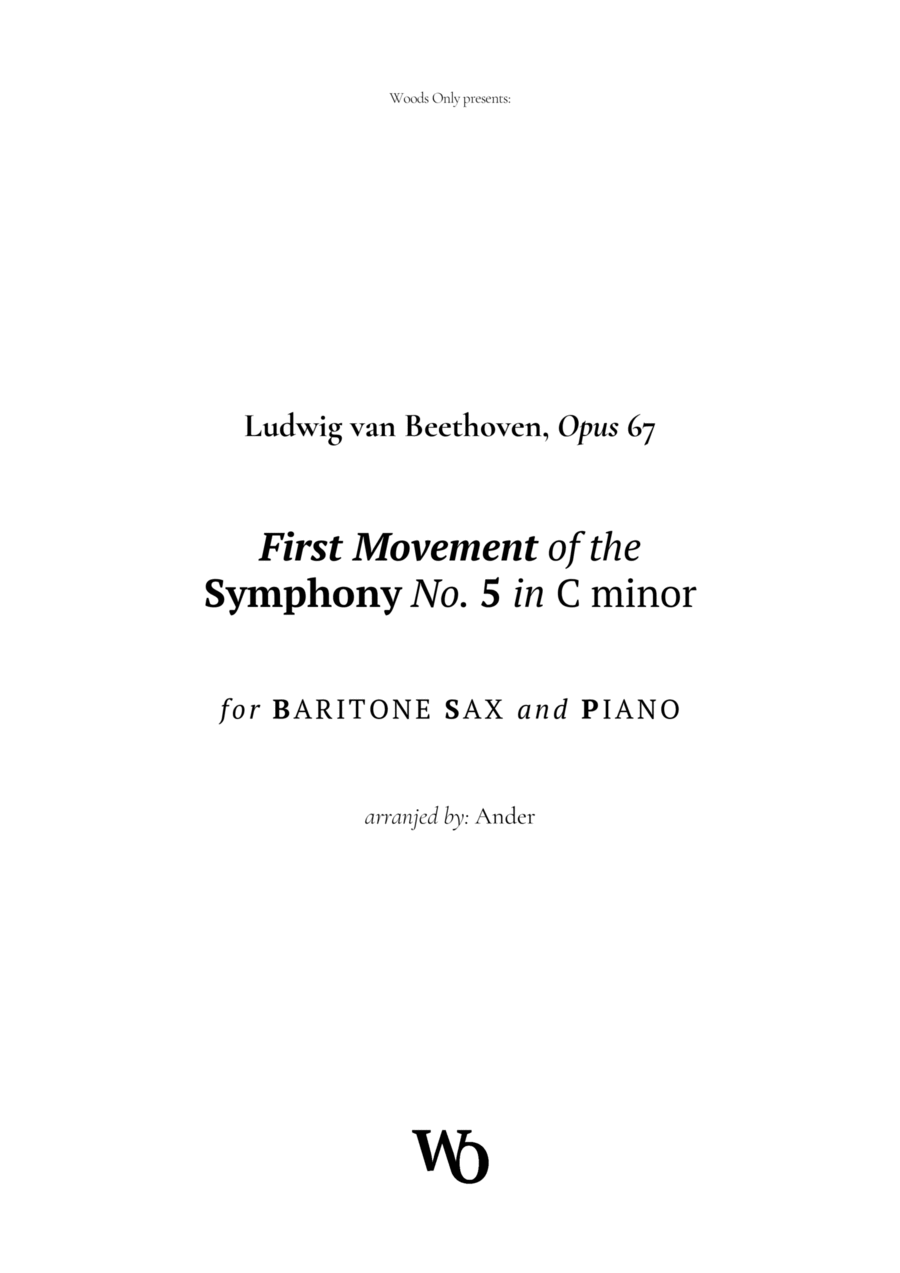

 Symphony No. 5 by Beethoven for Baritone Sax #Saxophone Baryton, Piano #INTERMÉDIAIRE #Classique #Ludwig van Beethoven #Ander #Symphony No. 5 by Beethoven fo #Woods Only, Arrangements #SheetMusicPlus
Symphony No. 5 by Beethoven for Baritone Sax #Saxophone Baryton, Piano #INTERMÉDIAIRE #Classique #Ludwig van Beethoven #Ander #Symphony No. 5 by Beethoven fo #Woods Only, Arrangements #SheetMusicPlus
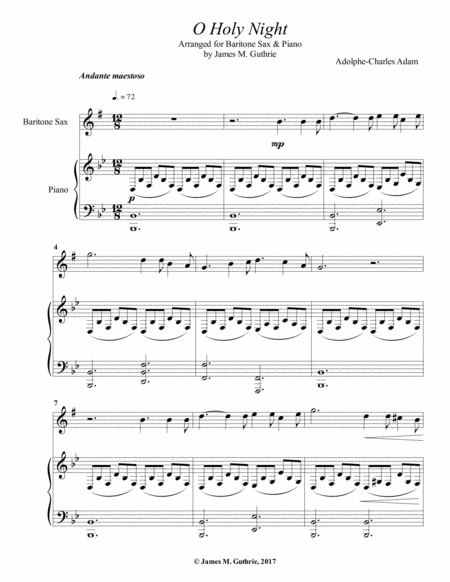

 O Holy Night for Baritone Sax & Piano #Saxophone Baryton, Piano #DÉBUTANT #Noël #Adam #James M #O Holy Night for Baritone Sax #jmsgu3 #SheetMusicPlus
O Holy Night for Baritone Sax & Piano #Saxophone Baryton, Piano #DÉBUTANT #Noël #Adam #James M #O Holy Night for Baritone Sax #jmsgu3 #SheetMusicPlus


 Jingle Bells for Baritone Sax & Piano #Saxophone Baryton, Piano #DÉBUTANT #Noël #James Pierpont #James M #piano #Jingle Bells for Baritone Sax #jmsgu3 #SheetMusicPlus
Jingle Bells for Baritone Sax & Piano #Saxophone Baryton, Piano #DÉBUTANT #Noël #James Pierpont #James M #piano #Jingle Bells for Baritone Sax #jmsgu3 #SheetMusicPlus
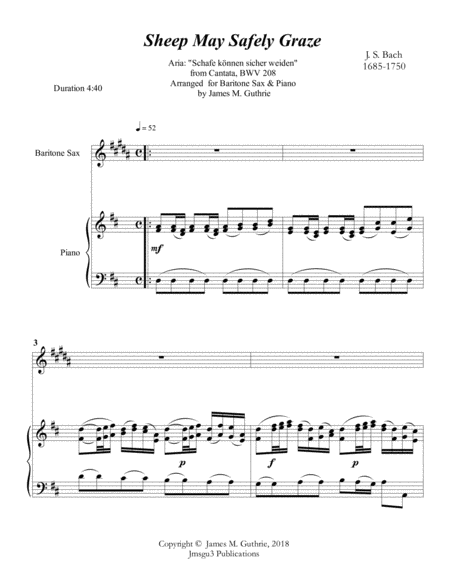

 Bach: Sheep May Safely Graze for Baritone Sax & Piano #Saxophone Baryton, Piano #FACILE #Classique #Johann Sebastian Bach #James M #Bach: Sheep May Safely Graze f #jmsgu3 #SheetMusicPlus
Bach: Sheep May Safely Graze for Baritone Sax & Piano #Saxophone Baryton, Piano #FACILE #Classique #Johann Sebastian Bach #James M #Bach: Sheep May Safely Graze f #jmsgu3 #SheetMusicPlus
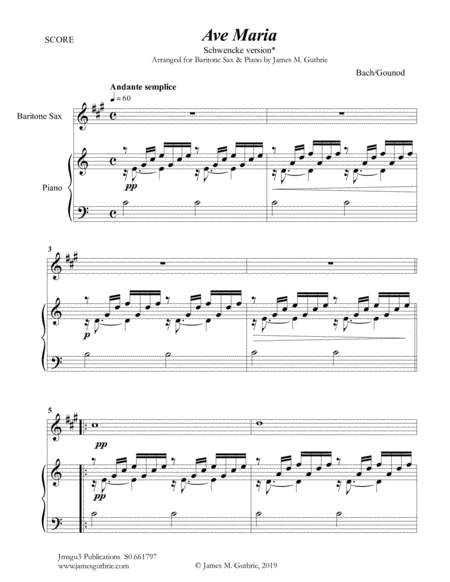

 Bach-Gounod: Ave Maria, Schwencke version for Baritone Sax & Piano #Saxophone Baryton, Piano #FACILE #J #James M #Bach-Gounod: Ave Maria, Schwen #jmsgu3 #SheetMusicPlus
Bach-Gounod: Ave Maria, Schwencke version for Baritone Sax & Piano #Saxophone Baryton, Piano #FACILE #J #James M #Bach-Gounod: Ave Maria, Schwen #jmsgu3 #SheetMusicPlus
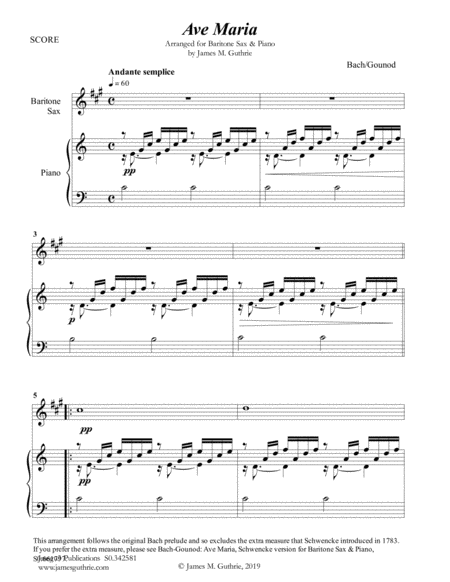

 Bach-Gounod: Ave Maria for Baritone Sax & Piano #Saxophone Baryton, Piano #FACILE #Bach-Gounod #James M #Piano, S0 #Bach-Gounod: Ave Maria for Bar #jmsgu3 #SheetMusicPlus
Bach-Gounod: Ave Maria for Baritone Sax & Piano #Saxophone Baryton, Piano #FACILE #Bach-Gounod #James M #Piano, S0 #Bach-Gounod: Ave Maria for Bar #jmsgu3 #SheetMusicPlus


 Bach: Bist du bei mir BWV 508 for Baritone Sax & Piano #Saxophone Baryton, Piano #FACILE #Classique #Johann Sebastian Bach #James M #Bach: Bist du bei mir BWV 508 #jmsgu3 #SheetMusicPlus
Bach: Bist du bei mir BWV 508 for Baritone Sax & Piano #Saxophone Baryton, Piano #FACILE #Classique #Johann Sebastian Bach #James M #Bach: Bist du bei mir BWV 508 #jmsgu3 #SheetMusicPlus
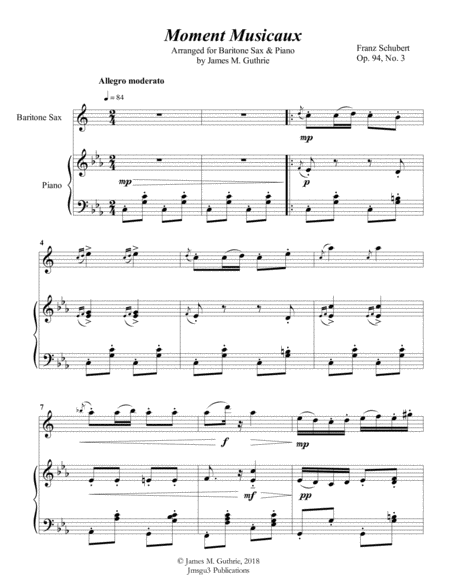

 Schubert: Moment Musicaux for Baritone Sax & Piano #Saxophone Baryton, Piano #FACILE #Classique #Franz Schubert #James M #Schubert: Moment Musicaux for #jmsgu3 #SheetMusicPlus
Schubert: Moment Musicaux for Baritone Sax & Piano #Saxophone Baryton, Piano #FACILE #Classique #Franz Schubert #James M #Schubert: Moment Musicaux for #jmsgu3 #SheetMusicPlus
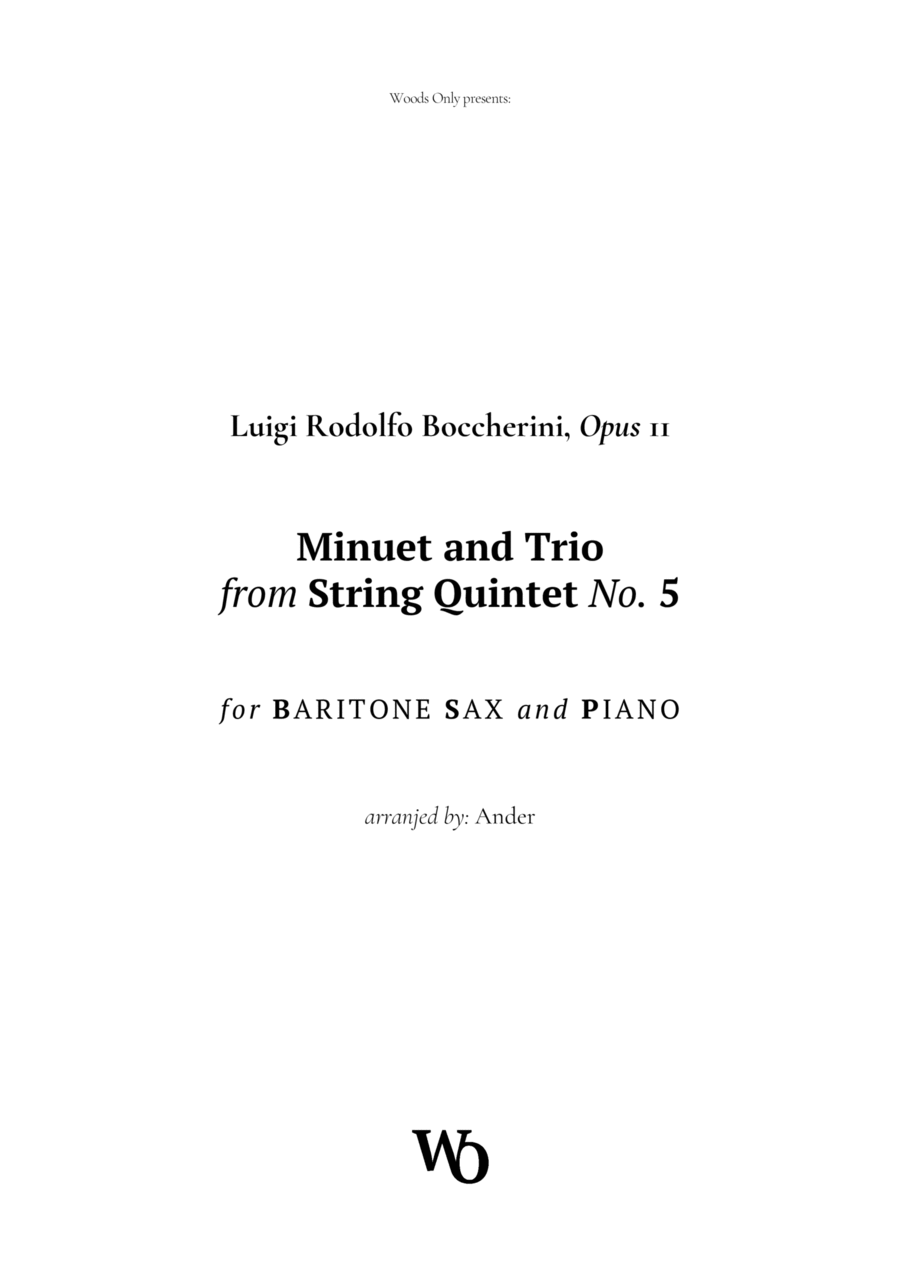

 Minuet by Boccherini for Baritone Sax #Saxophone Baryton, Piano #DÉBUTANT #Luigi Boccherini #Ander #Minuet by Boccherini for Barit #Woods Only, Arrangements #SheetMusicPlus
Minuet by Boccherini for Baritone Sax #Saxophone Baryton, Piano #DÉBUTANT #Luigi Boccherini #Ander #Minuet by Boccherini for Barit #Woods Only, Arrangements #SheetMusicPlus
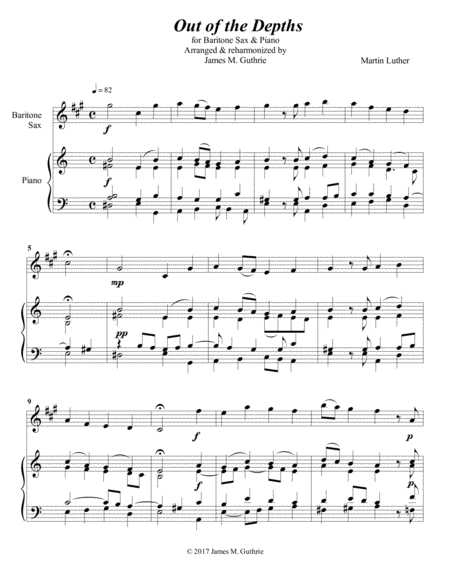

 Luther: Out of the Depths for Baritone Sax & Piano #Saxophone Baryton, Piano #DÉBUTANT #Martin Luther #James M #Luther: Out of the Depths for #jmsgu3 #SheetMusicPlus
Luther: Out of the Depths for Baritone Sax & Piano #Saxophone Baryton, Piano #DÉBUTANT #Martin Luther #James M #Luther: Out of the Depths for #jmsgu3 #SheetMusicPlus
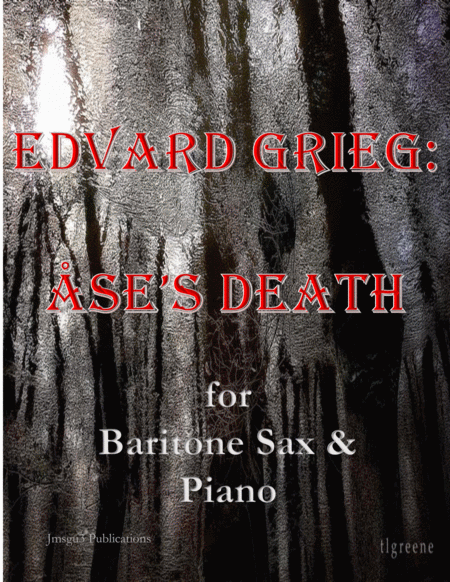

 Grieg: Ase's Death from Peer Gynt Suite for Baritone Sax & Piano #Saxophone Baryton, Piano #INTERMÉDIAIRE #Classique #Edvard Grieg #James M # #Grieg: Ase's Death from Peer G #jmsgu3 #SheetMusicPlus
Grieg: Ase's Death from Peer Gynt Suite for Baritone Sax & Piano #Saxophone Baryton, Piano #INTERMÉDIAIRE #Classique #Edvard Grieg #James M # #Grieg: Ase's Death from Peer G #jmsgu3 #SheetMusicPlus
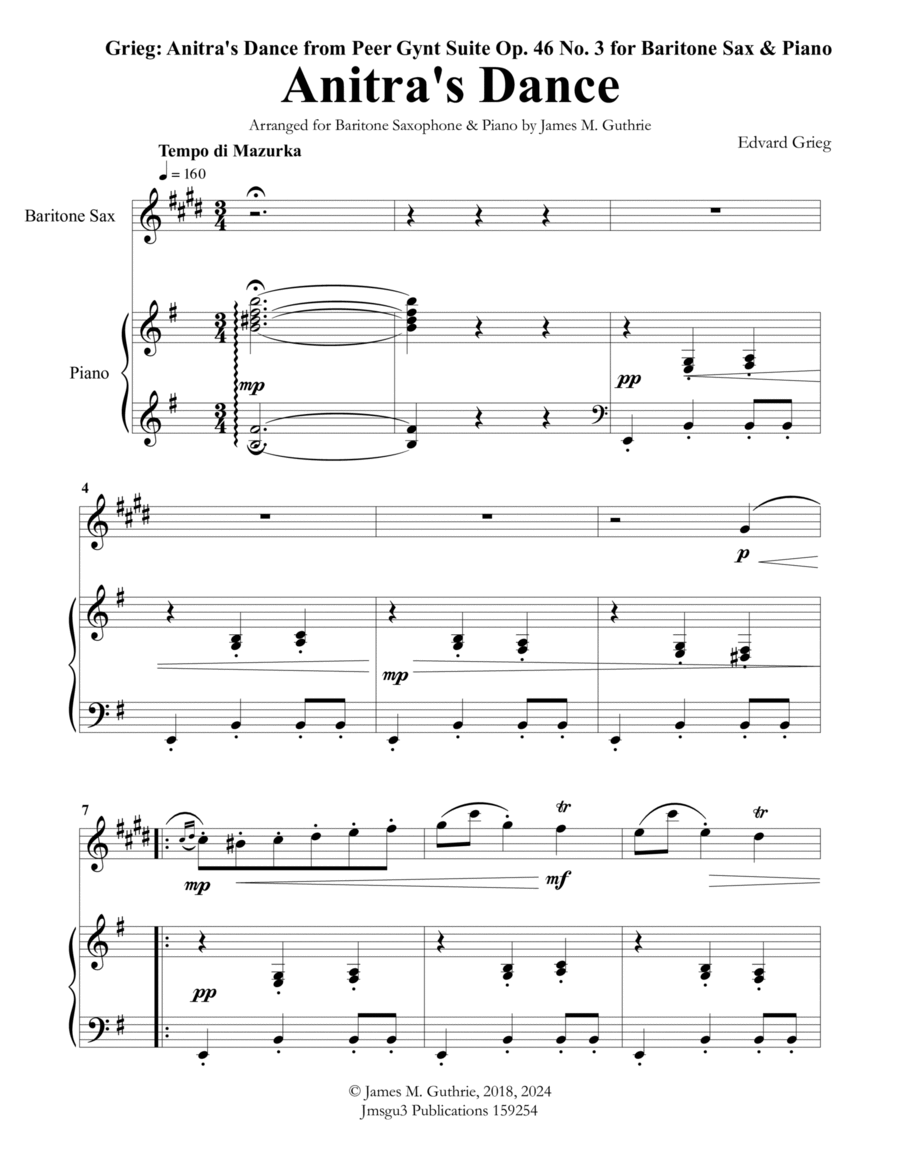

 Grieg: Anitra's Dance from Peer Gynt Suite for Baritone Sax & Piano #Saxophone Baryton, Piano #INTERMÉDIAIRE #Classique #Edvard Grieg #James M #Grieg: Anitra's Dance from Pee #jmsgu3 #SheetMusicPlus
Grieg: Anitra's Dance from Peer Gynt Suite for Baritone Sax & Piano #Saxophone Baryton, Piano #INTERMÉDIAIRE #Classique #Edvard Grieg #James M #Grieg: Anitra's Dance from Pee #jmsgu3 #SheetMusicPlus


 O Jesulein süss by Bach for Baritone Sax and Piano #Saxophone Baryton, Piano #DÉBUTANT #Classique #Johann Sebastian Bach #Ander #O Jesulein süss by Bach f #Woods Only, Arrangements #SheetMusicPlus
O Jesulein süss by Bach for Baritone Sax and Piano #Saxophone Baryton, Piano #DÉBUTANT #Classique #Johann Sebastian Bach #Ander #O Jesulein süss by Bach f #Woods Only, Arrangements #SheetMusicPlus
The Forever Now



Baritone Saxophone,Piano - Level 2 - SKU: A0.1294102 By Mandy Moore. By Siddhartha Khosla and Taylor Goldmsith. Arranged by Rodrigo Faleiros. Chamber,Fi...(+)
The Forever Now



Baritone Saxophone,Piano - Level 2 - SKU: A0.1294086 By Mandy Moore. By Siddhartha Khosla and Taylor Goldmsith. Arranged by Rodrigo Faleiros. Chamber,Fi...(+)
Mendelssohn: Wedding March for Baritone Sax & Piano



Baritone Saxophone,Piano - Level 3 - SKU: A0.549893 Composed by Felix Bartholdy Mendelssohn. Arranged by James M. Guthrie, ASCAP. Romantic Period,Standa...(+)
Apres un reve



Baritone Saxophone & Piano - Grade 3 - SKU: R0.49940 Composed by Gabriel Faure. Arranged by Mikhail Nakariakov. Baritone Saxophone & Piano. Score and pa...(+)
Handel: Largo from Xerxes for Baritone Sax & Piano



Baritone Saxophone,Piano - Level 3 - SKU: A0.549384 Composed by George Frideric Handel. Arranged by James M. Guthrie, ASCAP. Baroque,Sacred,Standards,We...(+)
Mendelssohn: Song Without Words Op. 109 for Baritone Sax & Piano



Baritone Saxophone,Piano - Level 3 - SKU: A0.549490 Composed by Felix Mendelssohn (1809 –1847. Arranged by James M. Guthrie, ASCAP. Instructional...(+)
Au Revoir



Baritone Saxophone,Piano - Level 2 - SKU: A0.650302 Composed by Behr, Franz. Arranged by Nick Lacanski. Concert,Instructional,Romantic Period,Standards....(+)
The Stars and Stripes Forever (Baritone Saxophone and Piano)



Baritone Saxophone,Piano - Level 2 - SKU: A0.1196011 By Stephen DeCesare. By John Philip Sousa. Arranged by Stephen DeCesare. 20th Century,March,Multicu...(+)
The Stars and Stripes Forever (baritone sax and piano)



Baritone Saxophone,Piano - Level 1 - SKU: A0.936582 Composed by John Philip Sousa (1854-1932). Arranged by Passoni Music. Concert,Graduation,Standards,W...(+)
Forever Autumn



Baritone Saxophone,Piano - Level 3 - SKU: A0.791176 By The Moody Blues. By Jeff Wayne. Arranged by Kevin P Holdgate. Rock. Score and part. 5 pages. Kevi...(+)
I Did It My Way



Baritone Saxophone,Piano - Level 2 - SKU: A0.1347617 By Jay-Z. By Claude Francois, Francois Revaud, Gilles Thibaut, Jacques Revaux, Jimmy Kendrix, Paul ...(+)
I Did It My Way



Baritone Saxophone,Piano - Level 2 - SKU: A0.1347618 By Jay-Z. By Claude Francois, Francois Revaud, Gilles Thibaut, Jacques Revaux, Jimmy Kendrix, Paul ...(+)
Symphony No. 5 by Beethoven for Baritone Sax



Baritone Saxophone,Piano - Level 3 - SKU: A0.1154912 Composed by Ludwig van Beethoven. Arranged by Ander. Classical,Instructional,Opera,Romantic Period,...(+)
O Holy Night for Baritone Sax & Piano



Baritone Saxophone,Piano - Level 1 - SKU: A0.548670 Composed by Adam. Arranged by James M. Guthrie, ASCAP. Christian,Christmas. Score and part. 10 pages...(+)
Jingle Bells for Baritone Sax & Piano



Baritone Saxophone,Piano - Level 1 - SKU: A0.548665 Composed by James Pierpont. Arranged by James M. Guthrie, ASCAP. Christmas. Score and part. 8 pages....(+)
Bach: Sheep May Safely Graze for Baritone Sax & Piano



Baritone Saxophone,Piano - Level 2 - SKU: A0.548979 Composed by Johann Sebastian Bach. Arranged by James M. Guthrie, ASCAP. Baroque,Holiday,Standards,We...(+)
Bach-Gounod: Ave Maria, Schwencke version for Baritone Sax & Piano



Baritone Saxophone,Piano - Level 2 - SKU: A0.550924 Composed by J. S. Bach - Gounod. Arranged by James M. Guthrie, ASCAP. Christmas,Easter,Standards. Sc...(+)
Bach-Gounod: Ave Maria for Baritone Sax & Piano



Baritone Saxophone,Piano - Level 2 - SKU: A0.549365 Composed by Bach-Gounod. Arranged by James M. Guthrie, ASCAP. Christmas,Contemporary,Easter,Wedding....(+)
Bach: Bist du bei mir BWV 508 for Baritone Sax & Piano



Baritone Saxophone,Piano - Level 2 - SKU: A0.549237 Composed by Johann Sebastian Bach. Arranged by James M. Guthrie, ASCAP. Baroque,Easter,Standards,Wed...(+)
Schubert: Moment Musicaux for Baritone Sax & Piano



Baritone Saxophone,Piano - Level 2 - SKU: A0.549018 Composed by Franz Schubert. Arranged by James M. Guthrie, ASCAP. Holiday,Romantic Period,Sacred,Stan...(+)
Minuet by Boccherini for Baritone Sax



Baritone Saxophone,Piano - Level 1 - SKU: A0.1160616 Composed by Luigi Boccherini. Arranged by Ander. Baroque,Classical,Instructional,Traditional,Weddin...(+)
Luther: Out of the Depths for Baritone Sax & Piano



Baritone Saxophone,Piano - Level 1 - SKU: A0.548713 Composed by Martin Luther. Arranged by James M. Guthrie, ASCAP. Easter,Instructional,Standards. Scor...(+)
Grieg: Ase's Death from Peer Gynt Suite for Baritone Sax & Piano



Baritone Saxophone,Piano - Level 3 - SKU: A0.549534 Composed by Edvard Grieg. Arranged by James M. Guthrie, ASCAP. Concert,Contemporary,Romantic Period,...(+)
Grieg: Anitra's Dance from Peer Gynt Suite for Baritone Sax & Piano



Baritone Saxophone,Piano - Level 3 - SKU: A0.549558 Composed by Edvard Grieg. Arranged by James M. Guthrie, ASCAP. Concert,Instructional,Romantic Period...(+)
O Jesulein süss by Bach for Baritone Sax and Piano



Baritone Saxophone,Piano - Level 1 - SKU: A0.1049990 Composed by Johann Sebastian Bach. Arranged by Ander. Baroque,Christmas,Easter,Sacred. Score and pa...(+)







